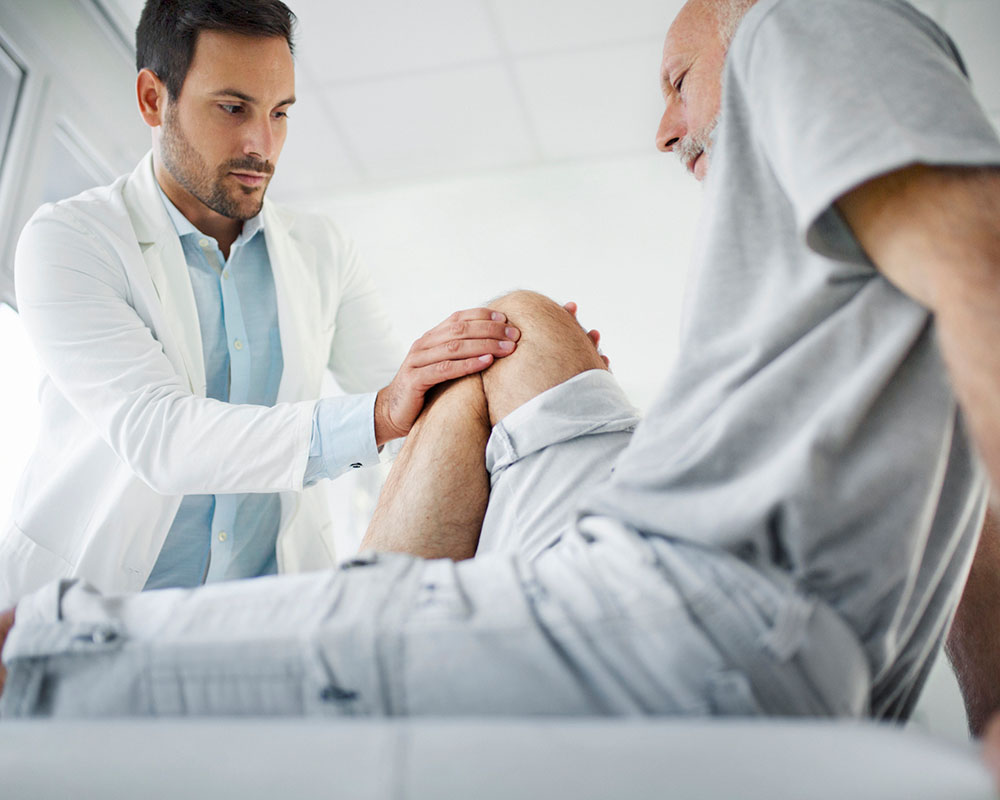Cartilage Regeneration With Regenerative Medicine

Overview of Osteoarthritis
Musculoskeletal joint conditions are extremely prevalent in the US.
Osteoarthritis (OA) is the most common of the dozens of forms of arthritis. The Center for Disease Control and Prevention predicted that by 2020, arthritis will gain more patients than any other disease form in America 1, 2.
Osteoarthritis (OA) can affect any joint but most often occurs in the fingers, wrists, knees, hips, lower back, and neck.
Typical symptoms include joint pain, swelling, redness, stiffness, instability, immobility, or crepitus (crackling, popping, or squeaking sounds emanating from the joint). Because Osteoarthritis is a degenerative disease related to "wear and tear" of the cartilage in the affected joint, symptoms gradually worsen over time.
Age is the biggest risk factor for Osteoarthritis (OA) being most common in adults 50 years and older and more often in women than men. However, trauma to the joint due to accidents or sports injuries are significant risk factors for developing the disease.
Cartilage degeneration and current treatment modalities
In this article, we take a more detailed look into how Osteoarthritis affects the cartilage and how regenerative medicine works to counteract the progression of Osteoarthritis alleviating pain, restoring mobility, and helping patients avoid surgery.
Three Types of Cartilage and Where They Are Found in the Body
Let's start by describing what cartilage is, the three types, and where it's found.
Cartilage is a type of connective or supportive tissue. It is a precursor to bone in the developing embryo but remains dispersed throughout the body in adults, especially to cover the joints.
Cartilage is interesting because, unlike most tissues, it does not contain nerves or blood vessels (avascular). Instead, the cells that cartilage is composed of, the chondrocytes, receive nutrients from the gel-like matrix inside the cartilage. This special structure gives cartilage its strong and flexible characteristics.
There are three types of cartilage, two of which are relevant to regenerative therapy.
- The first is the elastic type, found in the ear, throat, nose, and trachea.
- The second is fibrous, and is found in pads called menisci (singular, meniscus) and in spinal vertebrae. These are vital to reduce friction in areas such as the knee. Considered the strongest of the three types, it is heavily composed of strong collagen fibers.
- Third is hyaline or articular cartilage, this is the most common type of cartilage found in the larynx, nose, ribs, trachea, and on bony surfaces at joints. Its main function is to provide a smooth, lubricated surface for low friction movements. At joints, hyaline cartilage is formed into a thin layer cover or sheath at the end of a bone and is the weakest of the three types.
The mechanical forces cartilage must absorb to protect the underlying bone are not insignificant. Overtime, the outer layers of cartilage begin to wear down increasing the friction between abutting bones.
ALSO READ: Knee Replacement vs. Regenerative Medicine in California
Normal wear and tear become more pronounced with age leading to the degenerative condition osteoarthritis. Osteoarthritis is characterized by a loss of joint space due to damaged or missing menisci or articular cartilage and can be accompanied by the growth of painful bone spurs.
Cartilage damage and Regenerative Medicine for Osteoarthritis
Growth Factors (GFs) or Platelet Rich Plasma (PRP) Injections are used in advanced Regenerative Therapy to stimulate healing. GFs can be obtained from amniotic fluid or your own blood. Amniotic products contain anywhere from 4-8x more GFs then your own PRP.
The amnion-derived GFs can be injected directly into the injured site (e.g, joints) using an ultrasound guided technique to ensure proper placement. These proteins then stimulate repair and regeneration at the site, offering the patient pain relief and quicker healing rates. It also promotes angiogenesis (new capillary formation) to make it easier for cells to get to the damaged area.
Because cartilage is avascular (does not contain blood vessels) it does not receive growth factors and other nutrients from the blood. Thus, it has a limited capacity for self-repair. The cartilage matrix is composed mainly of water, collagen, and proteoglycans, all of which contribute to the ability of cartilage to withstand compressional forces.
Chondrocytes, the resident cell type in cartilage that secrete the matrix, make up only about 5% of the mass of cartilage.
Conventional treatments are unable to affect the function or number of chondrocytes at an osteoarthritic joint. Instead, conventional therapies work to reduce inflammation and pain using NSAIDs or steroid injections (e.g., cortisone shots).
Long-term exposure to drugs like cortisone can have significant side effects and must therefore be used with caution. Some side effects include: cartilage loss, tendon injury, infection, fat loss at injection site, and elevated blood sugar.
To end our discussion of Osteoarthritis, it is important that note if you have received a diagnosis of OA one should always consult with their doctors armed with knowledge and questions in order to determine the state of their disease, what treatment options are available, and whether they are a good candidate for certain treatments.
ALSO READ: Understanding the Phases of Osteoarthritis and Knee Degeneration
At StemX we are always available to discuss the advanced regenerative treatment options for your particular situation and what may be covered by your insurance.
Typically, with one treatment and minimal to no downtime, StemX is on the cutting edge of regenerative medicine for orthopedics. We enable patients to get out of chronic pain and increase mobility without the need for surgery.
Founded in 2017, StemX is located at 124 Lomas Santa Fe Dr., #206, Solana Beach, CA and can be reached at 858-228-4189.
References:
- Centers for Disease Control and Prevention (CDC) Arthritis prevalence and activity limitations: United States, 1990. MMWR Morb Mortal Wkly Rep. 1994;43(24):433–438. [PubMed] [Google Scholar]
- From the Centers for Disease Control and Prevention. Arthritis prevalence and activity limitation–United States, 1990. 1994;272(5):346–347. [PubMed] [Google Scholar]
Recent Posts

BMI and Weight Loss: Understanding the Impact on Health
Body Mass Index (BMI) serves as a widely used tool for assessing weight status relative to height, offering valuable insights

Faqs About Regenerative Medicine and Stem Cell Treatment
Common-faqs-regenerative-medicines-and-stemcell-treatment

Five Habits that Could Be Worsening Your Knee Pain
Five Habits that Could Be Worsening Your Knee Pain

Regenerative Medicine Treatments for Tennis and Golfer’s Elbow
Overuse and repetitive contractions of the muscles and tendons of the forearm ...



